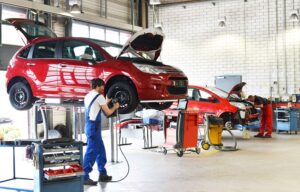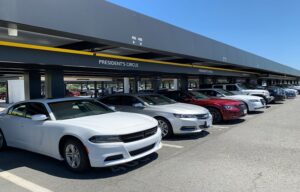
10 arguments against the obligation to wear a bicycle helmet
Do you remember when it was perfectly legal to drive a car without wearing a seat belt ? Where I come from, that era ended in 1970. It was in Victoria, Australia that for the first time in the world it became illegal to be in the front seat of a car and not not wear a seat belt.
What a long way! We can now imagine a time when it may be illegal for a human to be in the front seat, driving a car on a public road. I wonder where in the world will be the first place to take this bold step?
self-driving taxi in singapore
Thanks in part to the innovative efforts of Google, we currently have self-driving vehicles being tested in more than a handful of global cities . The future is now.
Well, wait a moment, Sunshine!
With over 1.2 billion vehicles on the road today , and given that the rate of new vehicle production sits at around 68 million units per year, it will take several decades to replace them all. Also, we won’t be moving production to 100% self-driving cars tomorrow. Judging by announcements from major automakers, it will be some time before a small fraction of these new cars are fully self-driving.
Volvo is targeting 2017 for its first self-driving vehicle production run, while other automakers are planning initial production runs in 2020 and some as late as 2022. We all agree – the introduction of fully self-driving cars is going to be a progressive affair over a very long period, with varying degrees of autonomy introduced at each phase of the transition.
Throughout automotive history, we have seen many safety innovations gradually implemented in a similar way. Most start out as optional features, but end up being required or standard. From the advent of the humble seat belt to airbags and car crumple zones, it took many years for them to become standard. Now we see the same pattern repeating itself with autonomous driving electric bike kit.
Prevention of accidents or reduction of the severity of accidents
autonomous braking
A Manufacturer’s View of Automatic Emergency Shutdown
The latest of these innovations is Automatic Emergency Braking (AEB). In the United States, automakers recently agreed to make this safety feature standard on all models by 2022, with a phased introduction over the next six years. AEB, when fully deployed in the United States, is expected to reduce the number of accidents by more than 9,000 per year.
This development is interesting for several reasons. First, according to the US government, making introduction voluntary gets the technology in place faster than if it were mandated by regulation. Second, the government uses a consumer watchdog organization to control the introduction. Finally, there doesn’t seem to be any absolute standard around AEB technology with some models bringing vehicles to a complete stop to avoid a crash while other models simply reduce speed to make a crash less severe.
Robot driving style
This last point is quite telling, as not all AEB systems are created equal. It looks like we are now developing robot driving “behavior” which will vary between make, model, year of manufacture and potentially also the level of the software patch. It is a curious notion.


